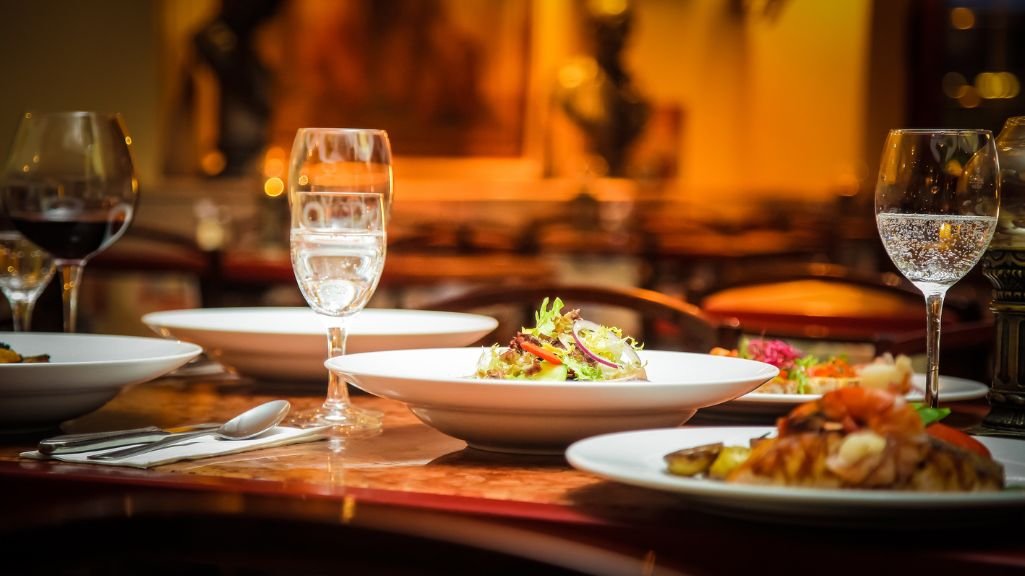Choosing the Best Type of Restaurant for Your Business
Swati Mandana
. 3 min read
The restaurant business is a dynamic and ever-changing environment. With so many types of restaurants to choose from, determining which ones are the most profitable can be challenging. Certain kinds of eateries, however, constantly rank first in terms of profitability. From bars and grills to quick food chains and upscale casual eating places, these restaurants have discovered the optimal cost-revenue mix to optimize their earnings. Through omegle chat, you can engage in real-time conversations with experienced restaurant owners, managers, and chefs who have excelled in their respective fields.

Best Most Profitable Types of Restaurants
1. Quick Service Restaurants
Quick service restaurant (QSR) is a restaurant which offer certain food items that require minimal preparation time and are delivered through quick services. Typically, quick service restaurants or QSRs cater to fast food items over a limited menu as they can be cooked in lesser time with minimum possible variation.
QSR restaurants are known to have standardized, modular and efficient processes which help them in reducing the lead times to fulfil the orders but still maintain the quality expected by the customers. Preparation methodology and usage of technology are pillars of a Quick service restaurant (QSR).
2. Fine Dining Restaurants
Fine Dining Restaurant means full service restaurants with finest menu, service and atmosphere. The menu includes extremely classy with high quality ingredients and prepared by a well-known and talented chef with years of industry experience. It combines the concept of both food and art in making delicious food.
3. Casual Restaurants
A casual restaurant offers full-service dining, where guests are seated and waited on by the server staff. But unlike more formal dining rooms, casual restaurants provide roomy, comfortable seating and a laid-back atmosphere. Menus contain comfort foods and items that are tried and true. You won't find experimental cuisine and trendy decor at a casual restaurant. Diners, mom-and-pops, and many popular chain restaurants are considered casual dining restaurants.
4. Food Truck Business
One of the main concerns for any startup is capital. Food trucks require low capital to start compared to starting a restaurant. The main cost of starting your food truck is buying your truck but if you don’t have enough funds you can start off by renting a food truck.
Compared to a restaurant where you have to operate from a certain location, a food truck makes it possible to operate from different locations due to its mobility. Your greatest focus should be getting customers within the shortest time. You can operate your food truck from various locations and identify the location that has more customers.
5. Buffet Restaurants
While buffet restaurants are becoming a popular choice for customers, introducing buffet service for a new restaurant may be advantageous.
Saves Labor Cost: The emphasis of buffet service restaurants is more on food than services. A restaurant operating a buffet service can serve a large number of diners with minimal staff. Even though servers would be needed for serving appetizers or beverages to the guests, the requirement for the front-of-house staff is less compared to table services. With fewer servers, you can bring a significant reduction in labor costs and concentrate more on improving the quality of food being served to the customers.
Improves profit margins: Buffet restaurants can help restaurateurs in cutting food costs and increase their profit margins. However, it greatly depends on menu innovation. As Buffet restaurant chains like Barbeque Nation have priced their weekday buffet menu slightly lower than the weekend menu. This attracts customers even on the slow days.
6. Seafood Restaurants
Seafood-restaurant owners and managers build sales by increasing foot traffic in their units. They often achieve greater traffic by running various promotions, such as discounting certain menu items each month to boost sales. Seafood restaurants, selling mostly niche products, rely on loyal customers to build their businesses. Therefore, they target customers who primarily like seafood. One way seafood restaurants build their customer counts is by offering high-quality products.
Importance of Restaurant Business
Employ Locals
When you consider the number of people required to run a full-service restaurant -- from bartenders to dishwashers -- and then you factor in the number of meal services per day, there's no denying the power of foodservice when it comes to employing people. According to the National Restaurant Association, more than half of Americans have worked in foodservice at one point or another, accounting for nearly 16 million people employed by the restaurant industry at any given moment.
Tourism
Food tourism is a big thing. People will go out of their ways or even plan trips just to try a particular restaurant or dish. A town with a thriving restaurant culture can become a tourist destination all on its own. Also, when traveling by car, people will choose to stay the night in cities with a lot of good restaurants.
Conclusion
In conclusion, the restaurant industry offers various profitable business models for entrepreneurs. Quick service restaurants provide fast food options with efficient processes, while fine dining restaurants offer a high-end experience with a talented chef and high-quality ingredients. Casual restaurants provide comfortable seating and tried-and-true menu items, while food trucks offer mobility and low startup costs. Buffet restaurants can reduce labor costs and improve profit margins, while seafood restaurants can build customer loyalty through high-quality products. Additionally, the restaurant industry plays an important role in employment and tourism, making it a crucial part of the economy.
More Stories from
Embracing the Remote Work Revolution: Pros and Cons for Businesses and Employees
This article explores the significant growth of remote work over the past decade, driven by technological advancements and changing work cultures.
Common Challenges Facing Small Businesses: Overcoming Obstacles to Success
This article discusses the common challenges that small businesses face in today's economic and social environment.
Unlocking Business Growth: Harness the Power of Web Solutions
Embrace the power of the internet to unlock your business's true potential and propel it towards unprecedented growth.
A Comprehensive Guide to Performance Testing: Stages, Metrics, and Tools
It explores the importance of performance testing in the development lifecycle, the types of performance testing, and the metrics used to measure performance.
Effective Marketing Techniques for Small Businesses on a Tight Budget
This article discusses effective marketing techniques for small businesses with limited budgets.









.png?width=40&aspect_ratio=1:1)
.png?width=40&aspect_ratio=1:1)

